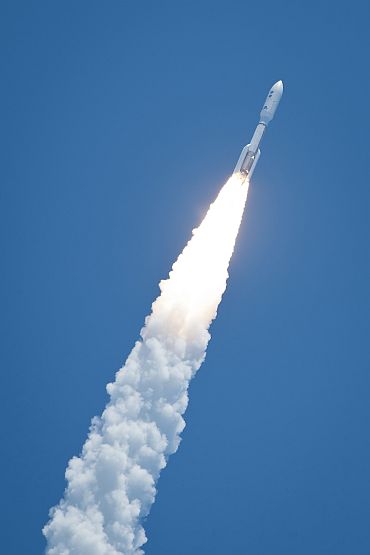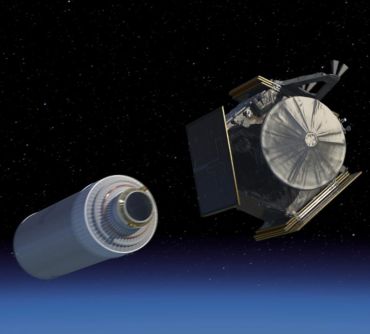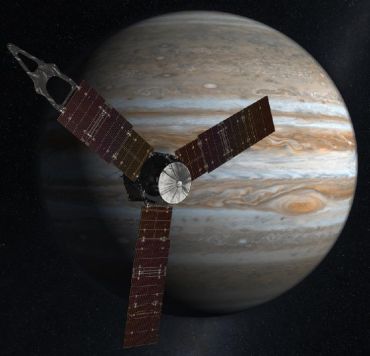Photographs: Courtesy NASA
United States space agency NASA's solar-powered Juno spacecraft lifted off from Cape Canaveral Air Force Station in Florida on Friday to begin a five-year journey to Jupiter.
Juno's detailed study of the largest planet in our solar system will help reveal Jupiter's origin and evolution. As the archetype of giant gas planets, Jupiter can help scientists understand the origin of our solar system and learn more about planetary systems around other stars.
Click on NEXT to see more PHOTOS...
Juno takes off to Jupiter
"Today, with the launch of the Juno spacecraft, NASA began a journey to yet another new frontier," NASA Administrator Charles Bolden said, adding, "The future of exploration includes cutting-edge science like this to help us better understand our solar system and an ever-increasing array of challenging destinations."
After Juno's launch aboard an Atlas V rocket, mission controllers now await telemetry from the spacecraft indicating it has achieved its proper orientation, and that its massive solar arrays, the biggest on any NASA deep-space probe, have deployed and are generating power.
Click on NEXT for more PHOTOS...
Juno takes off to Jupiter
Image: This still image from a Juno mission animation shows the spacecraft soon after launch as it separates from its Centaur upper rocket stage. The Juno spacecraft is in its stowed-for-launch configuration here, with its three large solar arrays folded against its sides"We will know more about Juno's status in a couple hours after its radios are energised and the signal is acquired by the Deep Space Network antennas at Canberra."
Click on NEXT to see more PHOTOS...
Juno takes off to Jupiter
Image: With its suite of science instruments, Juno will investigate the existence of a solid planetary core, map Jupiter's intense magnetic field, measure the amount of water and ammonia in the deep atmosphere, and observe the planet's auroras.It will take another five years and 1,740 million miles (2,800 million kilometers) to complete the journey to Jupiter.
Click on NEXT to see more PHOTOS...
Juno takes off to Jupiter
The spacecraft will orbit the planet's poles 33 times and use its collection of eight science instruments to probe beneath the gas giant's obscuring cloud cover to learn more about its origins, structure, atmosphere and magnetosphere, and look for a potential solid planetary core.
With four large moons and many smaller moons, Jupiter forms its own miniature solar system.
Its composition resembles that of a star, and if it had been about 80 times more massive, the planet could have become a star instead.
Click on NEXT to see more PHOTOS...
Juno takes off to Jupiter
Image: This graphic shows Juno's trajectory, or flight path, from Earth to Jupiter. The Juno spacecraft is scheduled to depart from Earth in August 2011. The spacecraft travels around the Sun, to a point beyond the orbit of Mars where it fires its main engine a couple of times. These deep space maneuvers set up the Earth flyby maneuver that occurs approximately two years after launch. The Earth flyby gives Juno the boost in velocity it needs to coast all the way to Jupiter. Juno arrives at Jupiter in July 2016."Jupiter is the Rosetta Stone of our solar system," said Scott Bolton, Juno's principal investigator from the Southwest Research Institute in San Antonio.
"It is by far the oldest planet, contains more material than all the other planets, asteroids and comets combined, and carries deep inside it the story of not only the solar system but of us. Juno is going there as our emissary -- to interpret what Jupiter has to say."
Click on NEXT to see more PHOTOS...
Juno takes off to Jupiter
Juno's name comes from Greek and Roman mythology.
The god Jupiter drew a veil of clouds around himself to hide his mischief, and his wife, the goddess Juno, was able to peer through the clouds and reveal Jupiter's true nature.
The NASA Deep Space Network -- or DSN -- is an international network of antennas that supports interplanetary spacecraft missions and radio and radar astronomy observations for the exploration of the solar system and the universe.
The network also supports selected Earth-orbiting missions.








article